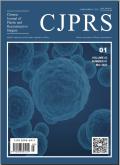Bibliometric analysis of three-dimensional printing in craniofacial and craniomaxillofacial applications: Research trends, key contributors, and collaboration networks
Chinese Journal of Plastic and Reconstructive Surgery
Pub Date : 2025-09-01
DOI:10.1016/j.cjprs.2025.06.004
引用次数: 0
Abstract
Background
Three-dimensional (3D) printing has revolutionized craniofacial and craniomaxillofacial applications, leading to substantial advancements in patient-specific treatments. In this study, a bibliometric analysis was performed to identify the key contributors, research trends, thematic developments, and collaboration networks in this evolving field.
Methods
Two search strategies were employed to ensure a comprehensive analysis: (1) a broad search, in which selected keywords were searched in the title, abstract, and keyword fields to capture all relevant publications, and (2) a title-specific search, in which keywords were restricted to the title field to identify publications with a strong focus on 3D printing in craniofacial and craniomaxillofacial applications. The retrieved dataset was analyzed using VOSviewer and RStudio (bibliometrix package).
Results
The broad search retrieved 3 534 publications, whereas the title-specific search yielded 280 publications. The analysis of these 280 papers focused on identifying the top authors, universities, and countries, as well as their research dynamics and collaboration networks. A more detailed approach was adopted by examining the titles of these 280 papers. VOSviewer segmented the titles into approximately 800 words, which were then categorized into 18 distinct thematic groups to represent research trends. The focus areas of the ten most cited papers were also analyzed.
Conclusion
This bibliometric study provides valuable insights into the progress in 3D printing for craniofacial and craniomaxillofacial applications. By highlighting the key contributors, thematic developments, and collaborative networks, this study offers a foundation for future research in this rapidly advancing field.
三维打印在颅面和颅颌面应用的文献计量学分析:研究趋势、主要贡献者和合作网络
三维(3D)打印已经彻底改变了颅面和颅颌面应用,导致了患者特异性治疗的实质性进展。在这项研究中,进行了文献计量分析,以确定这一不断发展的领域的主要贡献者、研究趋势、主题发展和合作网络。方法采用两种搜索策略来确保全面分析:(1)广泛搜索,在标题、摘要和关键词字段中搜索选定的关键词,以捕获所有相关出版物;(2)标题特定搜索,将关键词限制在标题字段中,以识别重点关注颅面和颅颌面3D打印应用的出版物。使用VOSviewer和RStudio (bibliometrix软件包)对检索到的数据集进行分析。结果广义检索检索到文献3 534篇,标题检索检索到文献280篇。对这280篇论文的分析侧重于确定顶级作者、大学和国家,以及他们的研究动态和合作网络。通过检查这280篇论文的标题,采用了更详细的方法。VOSviewer将这些标题分割成大约800个单词,然后将其分为18个不同的主题组,以代表研究趋势。分析了十大被引论文的重点领域。结论本文献计量学研究为3D打印在颅面和颅颌面应用的进展提供了有价值的见解。通过突出关键贡献者、主题发展和协作网络,本研究为这一快速发展领域的未来研究奠定了基础。
本文章由计算机程序翻译,如有差异,请以英文原文为准。
求助全文
约1分钟内获得全文
求助全文
来源期刊

Chinese Journal of Plastic and Reconstructive Surgery
Surgery, Otorhinolaryngology and Facial Plastic Surgery, Pathology and Medical Technology, Transplantation
CiteScore
0.40
自引率
0.00%
发文量
115
审稿时长
55 days
 求助内容:
求助内容: 应助结果提醒方式:
应助结果提醒方式:


